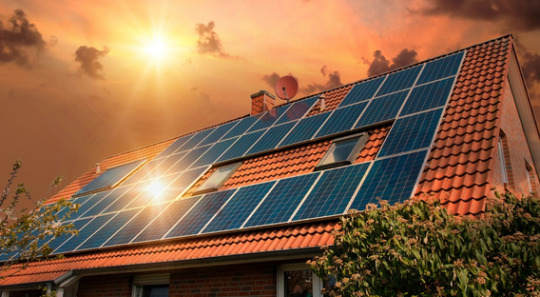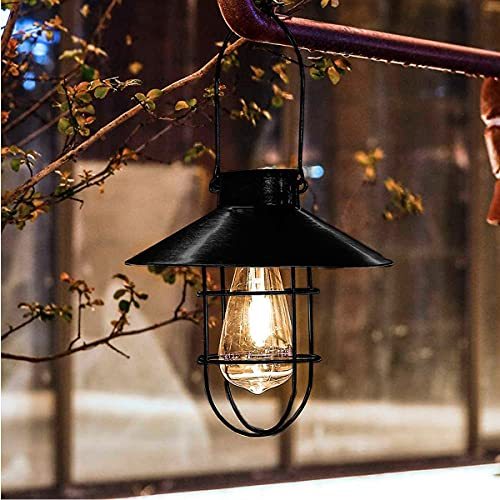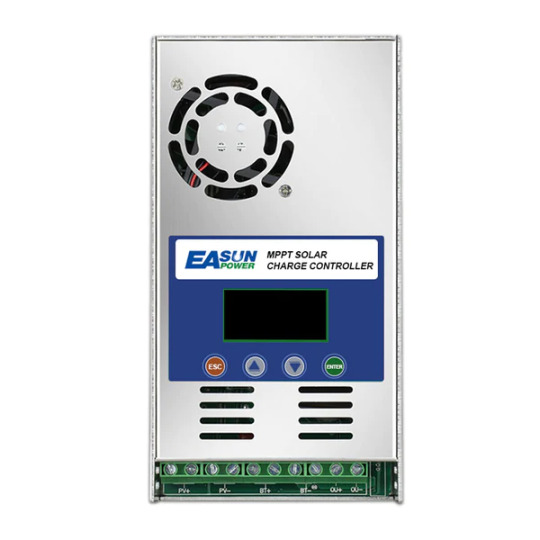#solar charge inverter
Text
SunGoldPower 48v 6500w Off Grid Hybrid Solar Inverter Charger SP6548 Review
The Professor reviews the all in one 6500w SP6548 hybrid solar charge inverter, this hybrid off grid inverter with 8000w solar input and 120A battery charger for off grid solar installations. https://sungoldpower.com/products/6500w-48v-solar-charge-inverter-parallel-wifi-monitor
youtube
0 notes
Text
youtube
The Professor reviews the all in one 6500w SP6548 hybrid solar charge inverter, this hybrid off grid inverter with 8000w solar input and 120A battery charger for off grid solar installations. https://sungoldpower.com/products/6500w-48v-solar-charge-inverter-parallel-wifi-monitor
0 notes
Text
Step-by-Step Guide to Install a Hybrid Inverters

Step 1: Planning and Preparation
1. Assess Your Energy Needs:
Calculate your energy consumption and determine the size and capacity of the hybrid inverter required.
Ensure compatibility with your existing solar panels, battery storage system, and grid connection.
2. Choose a Suitable Location:
Select a location that is cool, dry, and well-ventilated, ideally indoors or in a sheltered area.
Ensure the inverter is close to the battery bank, solar panels, and the main electrical panel to minimize power loss.
3. Gather Tools and Equipment:
Tools: Drill, screwdriver, wrenches, wire strippers, pliers, and multimeter.
Materials: Hybrid inverter, mounting bracket, DC and AC disconnects, circuit breakers, cables, conduits, connectors, and safety gear (gloves, safety goggles).
4. Review the Manufacturer’s Manual:
Carefully read the inverter’s installation manual for specific instructions and safety guidelines.
Step 2: Mount the Inverter
1. Turn Off All Power Sources:
Disconnect all power sources, including solar panels, batteries, and grid connection, to ensure safety during installation.
2. Mount the Inverter:
Secure the inverter on the wall using the provided mounting bracket and screws.
Make sure the inverter is mounted vertically and in a location where it can be easily accessed for maintenance.
Step 3: Electrical Connections
1. Connect the Battery Bank (DC Side):
Use appropriately rated cables to connect the positive and negative terminals of the battery to the corresponding DC input terminals on the inverter.
Ensure that the connections are tight and secure.
2. Connect the Solar Panels (DC Side):
Connect the positive and negative leads from the solar panels to the inverter’s solar input terminals.
Use a DC disconnect switch between the solar panels and the inverter for safety.
3. Connect the AC Load (AC Side):
Connect the inverter’s AC output to the main electrical panel or a dedicated sub-panel.
Install appropriate circuit breakers between the inverter and the AC load to protect the system.
4. Connect the Grid (AC Side):
If your system is grid-tied, connect the inverter’s grid input to the main electrical panel using a suitable circuit breaker.
Use an AC disconnect switch between the inverter and the grid connection for safety.
Step 4: Grounding
1. Ground the System:
Connect the inverter’s grounding terminal to the main grounding point of your electrical system.
Ensure that the solar panels, battery bank, and all other components are properly grounded to prevent electrical hazards.
Step 5: Configure the Inverter
1. Power On the Inverter:
Turn on the battery, solar, and grid inputs to the inverter in the correct sequence as per the manufacturer’s instructions.
2. Set Up the Inverter:
Use the inverter’s display or a connected device (like a laptop or smartphone) to configure the system settings.
Set up parameters such as battery type, charging settings, grid settings, and any backup modes.
Connect to the monitoring system if available.
Step 6: Testing and Commissioning
1. Test the System:
Verify that the inverter is functioning correctly by checking if it’s charging the battery from the solar panels and supplying power to the AC loads.
Test the backup mode by simulating a grid outage (if applicable).
Ensure that the inverter is properly feeding excess power back to the grid (for grid-tied systems).
2. Monitor the System:
Monitor the system’s performance over a few days to ensure everything is functioning as expected.
Adjust settings if necessary based on the inverter’s performance.
Step 7: Final Inspection and Documentation
1. Inspect the Installation:
Conduct a final inspection to ensure all electrical connections are secure and properly insulated.
Check that the inverter is securely mounted and that there are no signs of damage or loose components.
2. Document the Installation:
Record the details of the installation, including the model and serial number of the inverter, a wiring diagram, and any configuration settings.
Save this documentation for future reference and maintenance.
3. Obtain Necessary Approvals:
If required, have the installation inspected by a certified electrician or local authority to ensure it complies with all safety and regulatory standards.
Safety Tips:
Always follow the manufacturer’s guidelines and local electrical codes.
Use appropriate safety gear during installation.
If you’re not experienced with electrical work, consider hiring a professional installer.
By following these steps, you should be able to install a hybrid inverter safely and efficiently, ensuring a reliable and efficient energy system for your home or business.

#hybrid inverter#solar energy#Renewable Energy#Solar Power#Battery Storage#Energy Management#Grid Connection#Energy Independence#Cost Savings#Backup Power#Energy Efficiency#Charge Controller#Smart Features#Installation Guide
0 notes
Text
Epyz Solar Light Outdoor Hanging Vintage Metal Solar Lantern Light with Waterproof Edison Bulb Decorative for Patio, Backyard [ Warm Yellow Light , Pack of 1 ]
Price: (as of – Details)
Product Description
【Classic And Retro Edison Design】: Retro style lantern design + warm white tungsten light bulb, add warm brilliance. This Solar Lantern can be hung on anywhere you want, decorate your gorgeous life with a more romantic atmosphere, show your exquisite taste to your guest.【Solar Powered】: Solar hanging lantern with the automatic light sensor function,…

View On WordPress
#portable solar charger#portable solar generator#portable solar inverter#portable solar light#portable solar mobile charger#portable solar panel#portable solar panel for campervan#portable solar panel for camping#portable solar panel for caravan#portable solar panel for hiking#portable solar panel for home#portable solar panel for leisure battery#portable solar panel for rv#portable solar panel for tesla#portable solar panels for ev charging#portable solar power generator#portable solar water heater
0 notes
Text

Easun power Hybrid Solar Inverter series which integrates solar energy storage & means charging energy storage and AC sine wave output. And it has advanced control algorithm, it has high response speed, high reliability and high industrial standard. Four charging modes are optional, i.e. Only Solar, Mains Priority, Solar Priority and Mains & Solar hybrid charging; and two output modes are available, i.e. Inverter and Mains, to meet different application requirements.
#battery#power#inverter#solar inverter#solar power#charged with murder#outdoors#electrical#knowledge is power
1 note
·
View note
Text

EASUN POWER 60A MPPT Solar Charge Controller 12V 24V 36V 48V Battery PV Input 180VOC
0 notes
Text
MPPT Solar Inverter Price in India
Understanding MPPT Solar Inverters
Unraveling the Technology
MPPT, or Maximum Power Point Tracking, is a cutting-edge technology embedded in Solar PCU (Power Conditioning Unit) Inverters. It ensures optimal energy capture from solar panels, maximizing efficiency in converting sunlight into electricity.
Features that Set MPPT Solar Inverters Apart
Efficiency: Enjoy higher energy yields with advanced MPPT algorithms.
Adaptability: Suitable for various solar panel configurations and weather conditions.
Remote Monitoring: Many models offer remote monitoring capabilities for real-time performance tracking.
Pricing Overview
Factors Influencing MPPT Solar Inverter Prices
Capacity: Larger capacity inverters catering to higher energy needs may be priced higher.
Brand Reputation: Established brands with a track record of reliability might have a premium on their products.
Additional Features: Inverters with added functionalities, such as smart monitoring or grid connectivity, may be priced differently.
Price Range in India
While prices can vary based on the factors mentioned, a ballpark figure for solar inverter with MPPT charge controller in India ranges from INR 20,000 to INR 1,50,000. It's essential to consider your energy requirements and the specific features that align with your needs.
Why Invest in MPPT Solar PCU Inverters?
Long-Term Cost Savings
While the initial investment might seem significant, the enhanced efficiency of MPPT technology translates to more energy harvested over time, resulting in cost savings.
Environmental Impact
Reduce your carbon footprint by harnessing clean and sustainable solar energy, contributing to a greener planet.
Energy Independence
Enjoy a degree of energy independence by generating your electricity, providing resilience during power outages.
Conclusion
MPPT Solar Inverters represent a crucial step towards sustainable and cost-effective energy solutions. As you explore the market, weigh the features against the pricing to make an informed decision. Embrace the power of solar with MPPT technology for a brighter and greener future.
0 notes
Text

Oman's Best UPS System:An apparatus called an uninterruptible power supply, or UPS, protects equipment and data centres against power surges and outages. UPS systems come with a battery backup system that stores incoming AC power in case the primary power source fails. It is possible that your equipment will operate on DC power for a short while. When the electricity comes back on, the batteries are replenished. Industrial UPS systems protect your PCs, servers, and other IT hardware from voltage fluctuations that could harm or even destroy it. When the power completely goes out, UPS systems provide backup power in the vital moments before your generator kicks in.
connect:https://kiyumienergy.com/
#UPS battery suppliers in Oman#APC distributor Muscat#Electric vehicle charging station#UPS annual maintenance contract in Oman#generator maintenance services in Oman#UPS annual maintenance contract in Muscat#power inverter suppliers in Oman#Stabilizer suppliers in Oman#generator supplier in Muscat#Precision Cooling Units in oman#Solar suppliers in Oman#Solar suppliers in Muscat#ups dealers in Oman#UPS suppliers in Oman#Battery Supplier in the Oman#ups maintenance companies in Muscat#ups repair service in Muscat#UPS repair service in Oman#ups maintenance companies in Oman#UPS System in Oman#CCU suppliers in Oman#Stabilizer suppliers in Muscat#Inverter suppliers in Oman#Battery suppliers in Muscat#inverter battery suppliers in Oman#inverter battery suppliers in Muscat#solar battery suppliers in Muscat#Battery suppliers in Oman#UPS suppliers in Muscat#solar battery suppliers in Oman
1 note
·
View note
Text
How to Connect Solar Panel Inverter And Battery?
To connect a solar panel inverter and battery, you need to follow specific steps. In this guide, we will walk you through the process, ensuring a smooth connection that allows the battery to be charged using solar energy.
By understanding the correct wiring and connections, you can optimize your solar panel system’s efficiency and enjoy its benefits. So, let’s get started and learn how to…

View On WordPress
#How to Connect Solar Panel Inverter And Battery#how to connect solar panel to charge controller#Overview Of Solar Panel Inverters#solar panel with inverter and battery price for home
0 notes
Text
What is the difference between Solar Charge Controller & Solar Inverter?

Solar charge controllers and solar inverters are critical components in solar power systems, serving distinct roles.
What is a Solar Charge Controller?
It manages the flow of electricity from solar panels to batteries, preventing overcharging and optimizing charging rates. This safeguards battery life and is vital for off-grid and hybrid solar setups.
youtube
Benefits of Solar Charge Controller:
Cost-Efficiency: It enables the conversion of a standard inverter battery into a solar-compatible system at a lower cost.
Versatility: Users can harness 24V solar panels with a single 12V inverter battery, optimizing resource use.
Limitations of Solar Charge Controller:
Cost Proportion: The controller’s cost can be relatively high, impacting overall system expenses.
Technical Expertise: Installation may require technical knowledge, emphasizing the importance of professional setup.
What is Solar Inverter?
Solar inverter converts DC solar power into usable AC electricity for homes, businesses, and the grid, promoting efficient solar energy utilization.
Benefits of Solar Inverter:
Integrated Charge Control: Often includes built-in charge controllers, simplifying setup and reducing costs.
Voltage Options: Available in various voltages and capacities, catering to diverse energy needs.
Optimal Load Management: Efficiently powers up to 80% of connected loads, ensuring versatile energy usage.
Solar Capacity Utilization: Allows matching solar panel capacity to the inverter, optimizing energy use.
Compatibility: Supports various panel configurations and offers a flexible price range.
Limitations of Solar Inverter:
Limited Warranty: Off-grid solar inverters typically have shorter warranties than expected system lifespans.
Capacity Utilization: Operating near maximum capacity for prolonged periods can reduce lifespan and performance.
In conclusion, solar charge controller guarantee efficient battery charging and protection, whereas solar inverters transform DC solar energy into usable AC power. Together, these components facilitate the dependable and optimized use of solar energy, enhancing the efficiency, durability, and eco-friendliness of solar power systems.
0 notes
Text
youtube
The Professor reviews the all in one 6500w SP6548 hybrid solar charge inverter, this hybrid off grid inverter with 8000w solar input and 120A battery charger for off grid solar installations. https://sungoldpower.com/products/6500w-48v-solar-charge-inverter-parallel-wifi-monitor
0 notes
Text
Build a Handy 12-Volt Solar Generator with LiFePo4 Batteries
Building a Solar Generator
Batteries
“Winston” LiFePo4 cell with hardware
Previously, I wrote about Upgrading a Solar Power System and mentioned a cache of new Lithium Iron Phosphate (LiFePo4) cells. The “ThunderSky Winston” cells had come from a Segway repair operation and were new. A little looking around the ‘net revealed they were still available from GWL Group. With a capacity of 60 Amp…

View On WordPress
#battery#bms#build#bus bar#charge#controller#DIY#generator#howto#inverter#iron#lifepo#lithium#management#phosphate#radiob#solar#storage#system#wb0mmc
0 notes
Text
🚨IMPORTANT 🚨
After purchasing the tent, and as you know that there has been no electricity in Gaza for more than 10 months, my next goal is to turn on the electricity to charge mobile phones and light the tent!! Due to the lack of fuel or generators, the only source of energy in Gaza is solar energy, but most people cannot buy it due to its high cost, so I will make my next goal to buy a complete solar energy system. All I need is a solar panel, the price of which in Gaza is $1000. A 200A battery costs $1,000, an inverter converter costs $800. So the next target is $2800. ‼️

I will be sure to publish extensively to close this target as soon as possible.😔🙏🏼
The goal now is $10,000. It must reach $12,800 as soon as possible
@sayruq @sar-soor @nabulsi @riding-with-the-wild-hunt @feluka @slydiddledeedee @tsaricides @buttercuparry @schoolhater @appsa
#palestine#news on gaza#gaza#all eyes on gaza#all eyes on rafah#gazaunderattack#help#pale#sentimientos#send asks#the female gaze
1K notes
·
View notes
Text
GIGAWATTS T200 222Wh Portable Power Station 200W AC USB & Type C Output Solar Generator with LED Light for Outdoor Camping Fishing Emergency RV (White)
Price: (as of – Details)
Empower your outdoor experiences with the GIGAWATTS T200 Portable Power Station. Boasting a robust 200W output through versatile AC, USB, and Type C ports, this 222Wh solar-ready generator keeps your devices charged on camping trips, fishing excursions, and RV adventures. It is your reliable energy companion for on-the-go power needs. ROBUST POWER OUTPUT: It delivers a…

View On WordPress
#portable solar charger#portable solar generator#portable solar inverter#portable solar light#portable solar mobile charger#portable solar panel#portable solar panel for campervan#portable solar panel for camping#portable solar panel for caravan#portable solar panel for hiking#portable solar panel for home#portable solar panel for leisure battery#portable solar panel for rv#portable solar panel for tesla#portable solar panels for ev charging#portable solar power generator#portable solar water heater
0 notes
Text

Easun Power is a group of team who keep going to take the Green Energy to the whole world. Many VIP client call us EASUN POWER, We are not only to here sell, but also our pleasure to sharing the latest technologically for the solar inverter use by home. Also slowly to develping to the solar system like hybrid solar inverter, high efficiency car inverter, solar controller, lifepo4 batteries, solar panel, ESS, solar accessories etc. and design with solar system according clients request.
#solar inverter#solar installers near me#solar installation#inverter#power#battery#arrested and charged after knife found at edinburgh railway station amid ‘disturbance’
0 notes